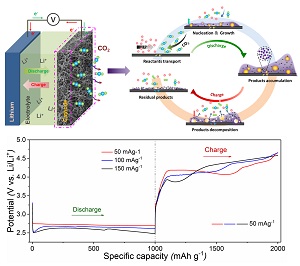 |
Xu Xiao et al published their article in ACS Sustainable Chemistry & Engineering
Investigation on the Discharge and Charge Behaviors of Li-CO2 Batteries with Carbon Nanotube Electrodes
Li−CO2 batteries are made efforts to exploring reaction routes and developing effective catalysts, the discharge and charge behaviors at different current densities and the intrinsic mechanisms are not reported. Herein, a Li−CO2 battery with a carbon nanotube electrode is investigated. It is found that current densities play an important role in formation and decomposition of products.
June 2020
|
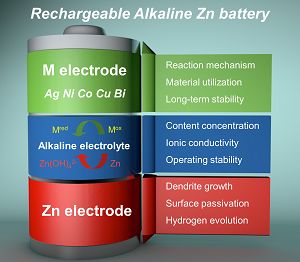 |
Wenxu Shang et al published their article in Energy Storage Materials
Rechargeable alkaline zinc batteries: Progress and challenges
Different kinds of alkaline zinc-based batteries (Zn-Ag, Zn-Ni, Zn-Co, Zn-Cu, and Zn-Ni batteries) are summarized. Breakthroughs in positive electrode materials, alkaline electrolyte and zinc electrode in recent years are systematically presented. The future research direction of this battery system is also given.
May 2020
|
 |
Wenxu Shang et al published their article in Electrochimica Acta
Microstructure-tuned cobalt oxide electrodes for high-performance Zn-Co batteries
The insufficient utilization of active material results in the poor performance of Zn-Co batteries. In this work, by adjusting the key parameters in the synthesis process, the Co3O4 electrodes with different pore size distributions, morphologies, and loadings are fabricated. The effects of the tuned microstructures on three-electrode and battery systems are compared carefully. In this way, a heterogeneous porous nanowire structure with reasonable loading is constructed for the first time, which shows high utilization ratio, excellent rate performance, and good cycling stability.
May 2020
|
 |
Yanyi Ma et al published their article in Journal of Energy Storage
Mathematical modeling and numerical analysis of the discharge process of an alkaline zinc-cobalt battery
This work developed the mathematical model of the discharge process of a alkaline zinc-cobalt battery. The effects of different design parameters on the discharge performance of zinc-cobalt batteries are investigated, and the design strategies for the battery are proposed. This work can provide useful guidance for improving the discharge performance of aqueous zinc-cobalt batteries.
April 2020 |
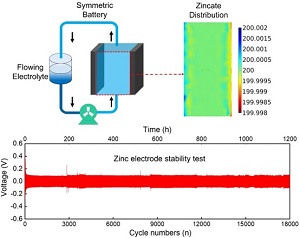 |
Wentao Yu et al published their article in Journal of Power Sources
Achieving a stable zinc electrode with ultralong cycle life by implementing a flowing electrolyte
In this work, we investigated the impacts of flowing electrolyte on the dendrite inhibition in symmetric battery. Firstly, in static condition, the influence of capacity and current density were investigated. Then, the flowing electrolyte was introduced to the symmetric battery to gain the relationship between the current density and flowing rate. Finally, a stable zinc electrode with ultralong life of 18000 cycles was achieved by changing the flowing orientation. This work can provide a reference for the developments of zinc-based batteries.
February 2020 |
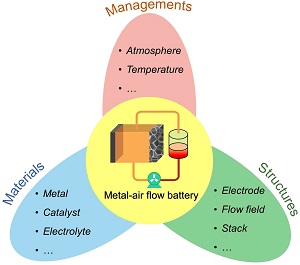 |
|
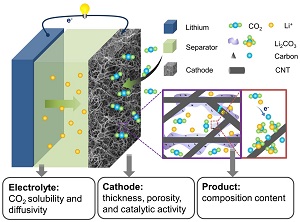 |
Xu Xiao et al published their article in International Journal of Energy Research
Towards the rational design of cathode and electrolyte materials for aprotic Li–CO2 batteries
A lithium-carbon dioxide (Li–CO2) battery offers an effective and efficient approach for the simultaneously CO2 capture and electrical energy generation. However, the useful guidance for the electrode design and the electrolyte selection is still lacking. Herein, we carry out numerical analyses on the effects of design parameters on the discharge voltage plateau and specific capacity.
November 2019 |
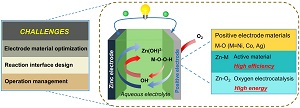 |
|
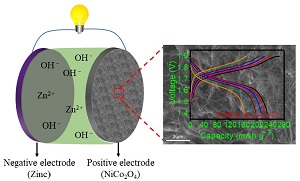 |
Wenxu Shang et al published their article in Journal of Power Sources
A high-performance Zn battery based on self-assembled nanostructured NiCo2O4 electrode
This work shown a Zn battery based on NiCo2O4 as the positive material in this work. Nanostructured NiCo2O4 in-situ grown on the nickel foam substrate with different morphologies (nanosheet, nanowire, and nanoplate) is synthesized using hydrothermal methods, followed by calcination processes, which exhibits hierarchical porous structure with a high specific surface area and proper pore volume, and high capacity and energy density when assembled into a battery.
May 2019 |
|
